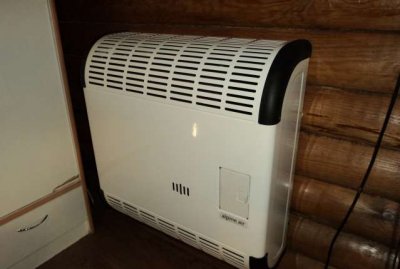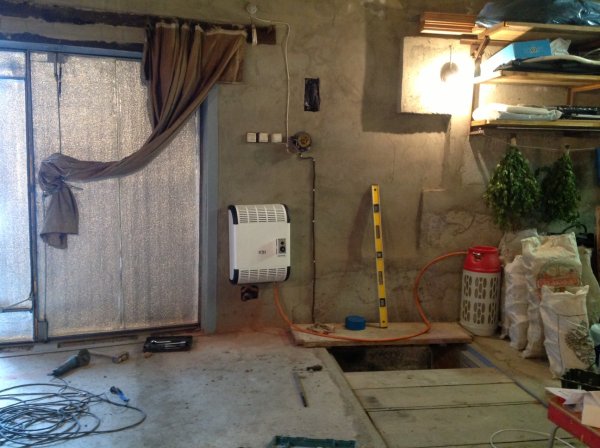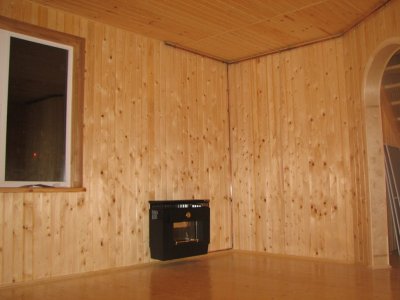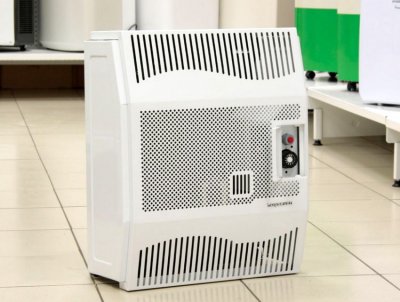Efficient, economical, and simply beautiful! Gas convectors for home heating

A gas convector is a heating device that operates autonomously. based on the use of a recuperative heat exchanger. The design provides for heating of the air mass in the room.
Convectors can be a worthy replacement for gas boilers, as they have a number of significant advantages in installation and operation.
Gas radiator-convector. Operating principle

Main components convectors:
- Frame. The main task is protection and creation of an attractive design. It is made of metal and covered with heat-resistant paint on top.
- Heat exchanger — is a device for fast and effective heating of air masses.
- Gas burner. To provide heating, combustion of fuel in a burner is required. It is part of the heat exchanger.
- Valve combined type allows you to regulate the gas supply to the burner. Regulation can be manual or automatic.
- Extractor hood. They highlight 2 main types: with forced draft and natural. In some models, a special fan is responsible for the exhaust, in others, the exhaust occurs naturally. The location of the air intake is important: from the room or from outside.
- Thermostat allows you to set the desired temperature and maintain it. It affects the gas supply valve.
- Automation is not included in every convector. It includes a system of sensors to increase safety and improve the operation of the device.
Devices for home and garage: wall-mounted, floor-mounted, built-in
All convectors are distributed by installation location:
- Wall mounted The models are compact, take up minimal space and do not clutter the floor surface. In private homes, they allow you to arrange a quality interior without taking up useful space and creating thermal curtains for windows or doors. Their peculiarity lies in their relatively low power.

Photo 1. Compact wall-mounted gas convector. The device is installed in a garage.
- Floor standing convectors have a high power, so they can heat even large rooms in the house. The maximum power of the devices is 100 kW, which is enough for production hangars.
- Built-in The options work by heating the liquid and heating the room system.
There are several main types of convectors on the market today, differing in the material used:
- steel — are characterized by low cost and less durability;
- cast iron — are capable of producing more heat.
There are independent models of devices, they do not require mandatory connection to the network and provide operation even with broken lines. When choosing the best option for a heater It is recommended to determine the need for additional functions:
- timer allows you to automatically turn the device on or off;
- fan accelerates the heating of the room by increasing the air flow rate. Such models are more durable, as they prevent the heating element from overheating.
Advantages and disadvantages
Like any design, home convectors have a number of positive and negative aspects.

Obvious advantages gas heaters:
- can be used in almost any room, there are no restrictions on area or interior;
- small dimensions and attractive appearance, you can choose a model for any design;
- convectors do not depend on the location of the heating system, accordingly, they can be installed in any place, there is no need to take into account the dependence of several devices or the required slope level;
- easy installation — during installation, there is no need to construct a central chimney; it is enough to make an exhaust hood in the wall and use the device;
- can be used for premises of any purpose: garages, residential buildings, industrial complexes, etc.;
- heating devices have a high degree of resistance to low temperatures and freezing;
- The efficiency of convectors can exceed that of the latest gas boilers. High efficiency reduces heating costs. However, most models have equal efficiency values.
But convectors are not an ideal device and have some disadvantages:
- convenient to use for heating only 1 room, regardless of size;
- It is not allowed to use it for heating water, hot water should come from another device, and in 2-circuit boilers this function is present;
- low level of thermal conductivity - many designs provide power up to 10 kW;
- convectors do not allow the installation of underfloor heating structures.
Main characteristics

When choosing, it is worth considering:
- device power;
- presence of a fan for quick heating;
- dependent or independent types;
- availability of automation;
- ability to operate on liquefied gas;
- body material;
- amount of gas consumed;
- working pressure;
- Efficiency;
- installation method;
- weight;
- required chimney diameter.
Economy
To a greater extent, efficiency depends on heat consumption for purposes that are not related to heating. That is, the more heat goes outside, the lower the efficiency. Usually, modern gas heaters have approximately the same efficiency. Due to the reduction in the amount of inefficiently spent heat due to the minimum size of the exhaust pipe and the high efficiency of the device itself, Convectors are more economical.
Only certain models of gas convectors have high efficiency rates, but due to the savings in heat on “heating the street”, these devices are more profitable.
Power calculation
In theory, it is quite easy to determine the power. It is necessary to compare 1 m² of area to 0.1 kW of power, with standard ceilings 2.8 m. In practice, it is better to take it with a reserve, since there are many factors that affect the heat in the room.
Installation is easy:
- Drill a hole in the wall for the pipe.
- Install the air intake pipe.
- Combine the air intake pipe with the device and create fasteners for the convector.
- Connect with the mounting stud and the exhaust pipe.
- Connect the gas and check the tightness of the connection.

Photo 2. The process of installing a gas convector. A special hole is made in the wall for the pipe.
Features of use
Eat some key distinguishing characteristics such a design in a private house:
- When installing, it is worth considering flammability of house materials. If the wall may catch fire, then insulation is placed between the gas outlet pipe and the wall.
- You can remove all the water pipes and install convectors in the niches underneath them. to save space.
- Gas distribution will be complicated, since it is necessary to run a pipe to each room.
Attention! Garages often contain a lot of things, the convector needs to be provided with free space and distance from flammable materials: plastic, foam rubber, paper, etc.
- When installing a convector in a garage located next to the house, you should take care so that combustion products do not damage the facade.
- Leave the device running overnight not recommended.
Useful video
Watch a video review of the Alpine Air gas convector, which explains the principles of its operation.
Convector for heating a private house is the ideal solution
Convector is a convenient and effective method of heating a private house, therefore many people prefer them. Low installation cost, temperature control option in each separate room and cheapness - this is what made them so popular with private home owners.







Comments